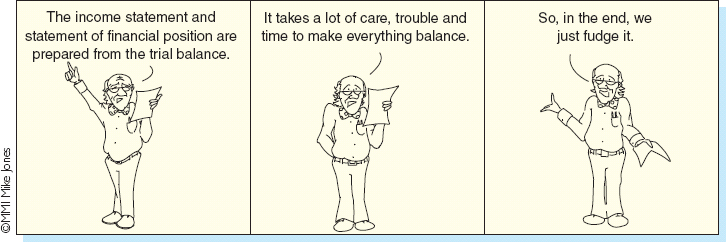Chapter 6
Preparing the financial statements
‘Mr Evans was the chief accountant of a large manufacturing concern. Every day, on arriving at work, he would unlock the bottom drawer of his desk, peer at something inside, then close and lock the drawer. He had done this for 25 years. The entire staff was intrigued but no one was game to ask him what was in the drawer. Finally, the time came for Mr Evans to retire. There was a farewell party with speeches and a presentation. As soon as Mr Evans had left the buildings, some of the staff rushed into his office, unlocked the bottom drawer and peered in. Taped to the bottom of the drawer was a sheet of paper. It read, “The debit side is the one nearest the window”.’
R. Andrews, Funny Business, C.A. Magazine, April 2000, p. 26. Copyright The Institute of Chartered Accountants of Scotland.

Learning Outcomes
After completing this chapter you should be able to:
- Show how the trial balance is used as a basis for preparing the financial statements.
- Prepare the income statement (profit and loss account) and the statement of financial position (balance sheet).
- Understand the post-trial balance adjustments commonly made to the accounts.
- Prepare the income statement (profit and loss account) and the statement of financial position (balance sheet) using post-trial balance adjustments.
Go online to discover the extra features for this chapter ...
Get Accounting, 3rd Edition now with the O’Reilly learning platform.
O’Reilly members experience books, live events, courses curated by job role, and more from O’Reilly and nearly 200 top publishers.

